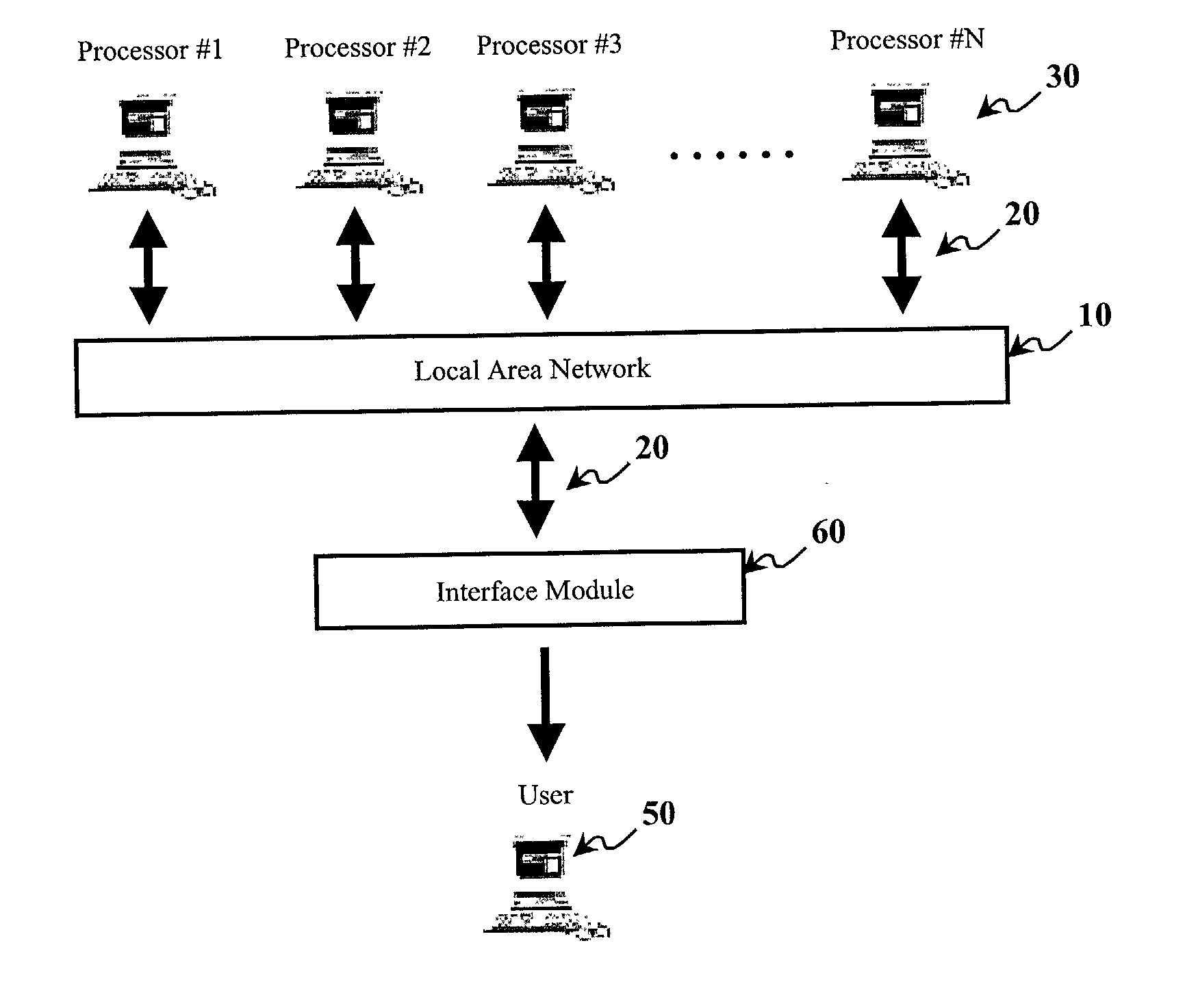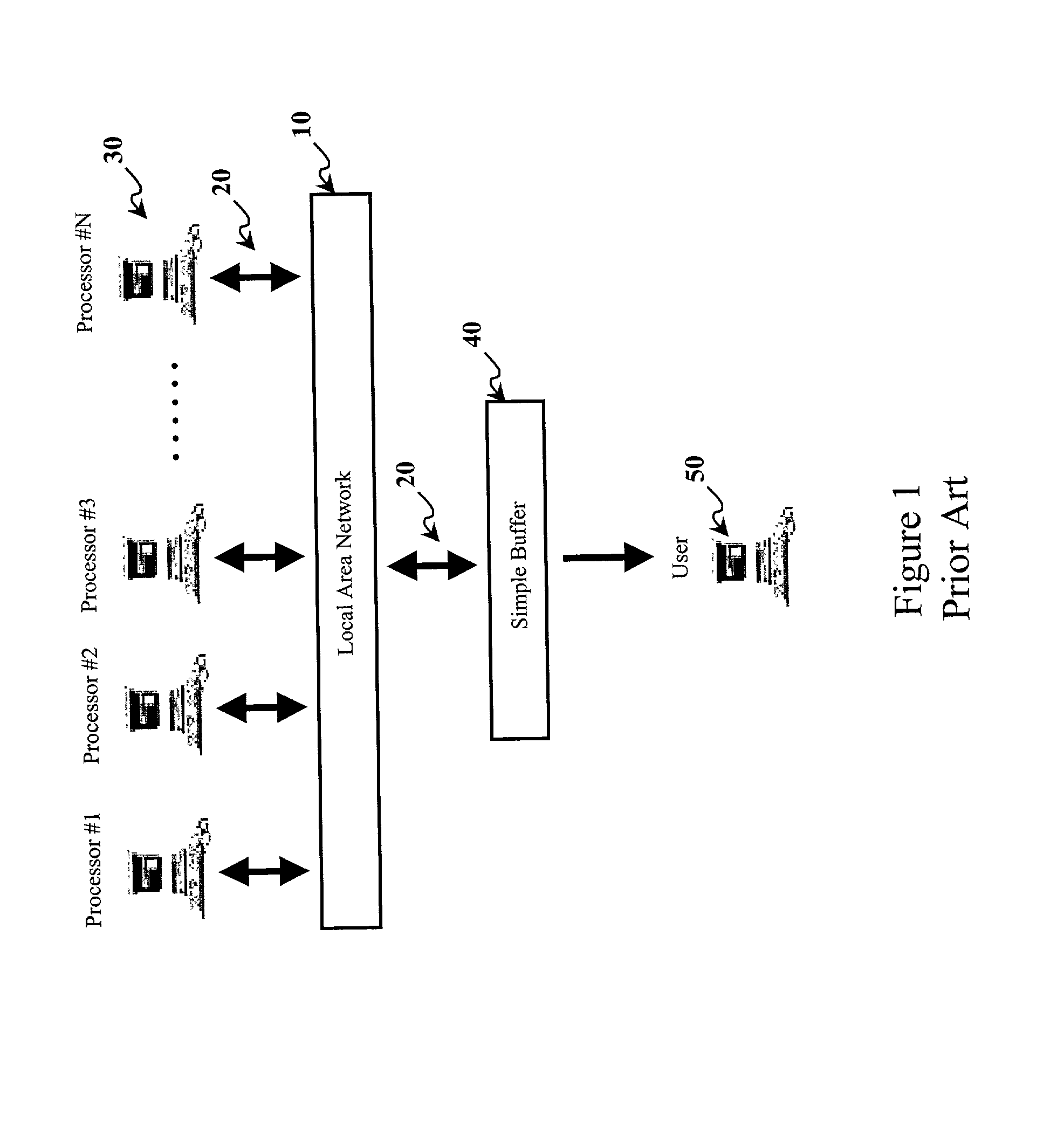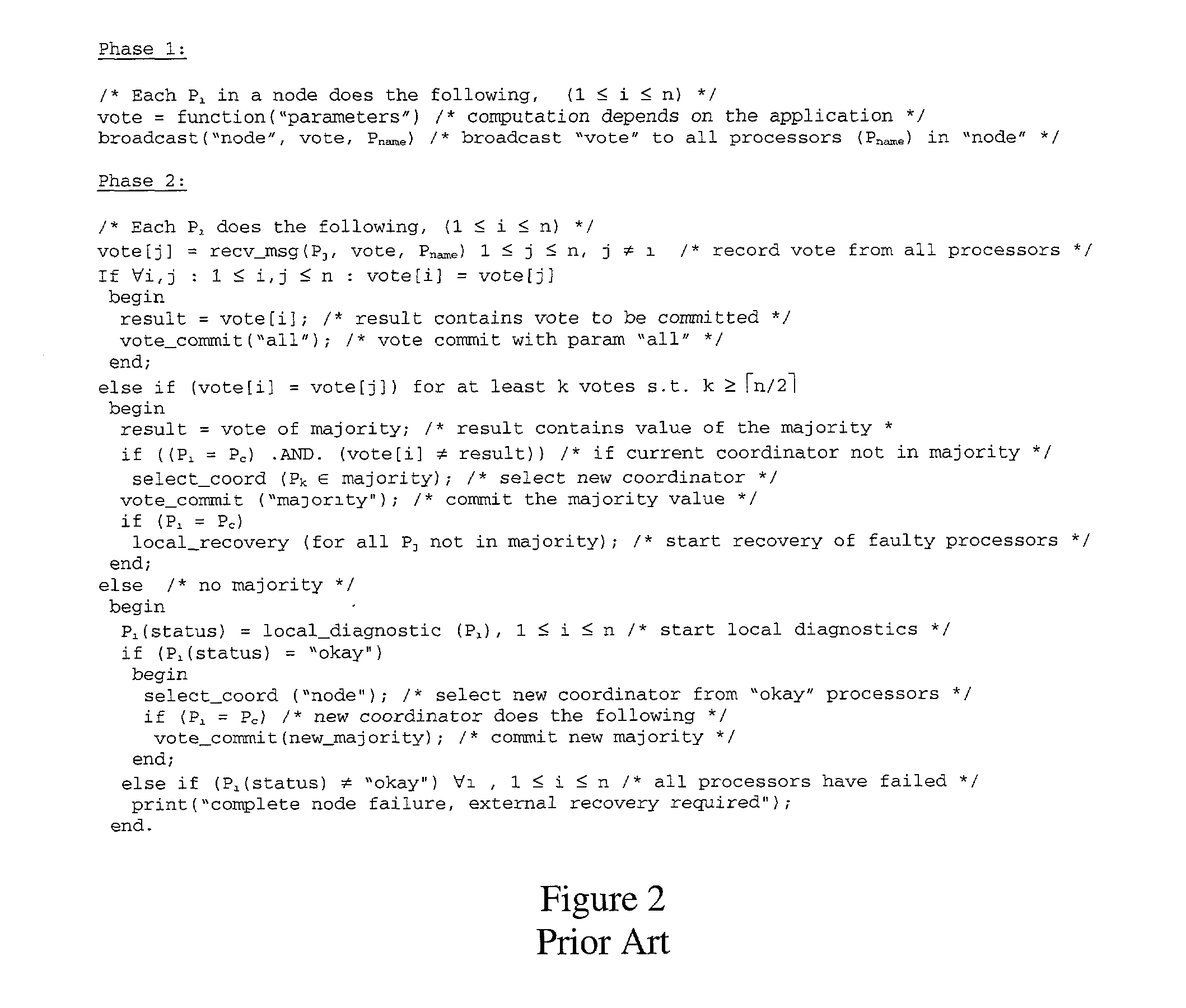Method and apparatus for improved security in distributed-environment voting
a distributed environment and voting technology, applied in the field of distributed computer systems, fault tolerance, security, etc., can solve the problems of system inability to be readily reconfigured, difficult to employ for other tasks, and most difficult to tolerate, so as to maintain security, fault tolerance, and performance.
- Summary
- Abstract
- Description
- Claims
- Application Information
AI Technical Summary
Benefits of technology
Problems solved by technology
Method used
Image
Examples
Embodiment Construction
[0045] Referring to FIG. 1, the distributed environment of the prior art is a local-area network 10 with a bus 20 architecture. General-purpose workstations function as processors #1 through #N 30 are attached to local-area network 10. Also attached is a buffer 40 that is local to a user 50. Buffer 40 holds a final result for user 50 to access.
[0046] Because buffer 40 is local to user 50, it is outside the fault containment boundary. Both its location and the fact that it is far less complex than a processor 30 make simple buffer 40 unlikely to fail. The prior art further assumes the following. First, each processor 30 follow the given protocol faithfully (i.e., they may not fail arbitrarily, only by halting or by giving incorrect results). Second, any faulty processor 30 will not disable communications among any of the other processors 30 (e.g., by appropriating the broadcast medium). Third, a processor 30 detects internal faults through a self-diagnostic routine initiated upon dem...
PUM
 Login to View More
Login to View More Abstract
Description
Claims
Application Information
 Login to View More
Login to View More - R&D
- Intellectual Property
- Life Sciences
- Materials
- Tech Scout
- Unparalleled Data Quality
- Higher Quality Content
- 60% Fewer Hallucinations
Browse by: Latest US Patents, China's latest patents, Technical Efficacy Thesaurus, Application Domain, Technology Topic, Popular Technical Reports.
© 2025 PatSnap. All rights reserved.Legal|Privacy policy|Modern Slavery Act Transparency Statement|Sitemap|About US| Contact US: help@patsnap.com



